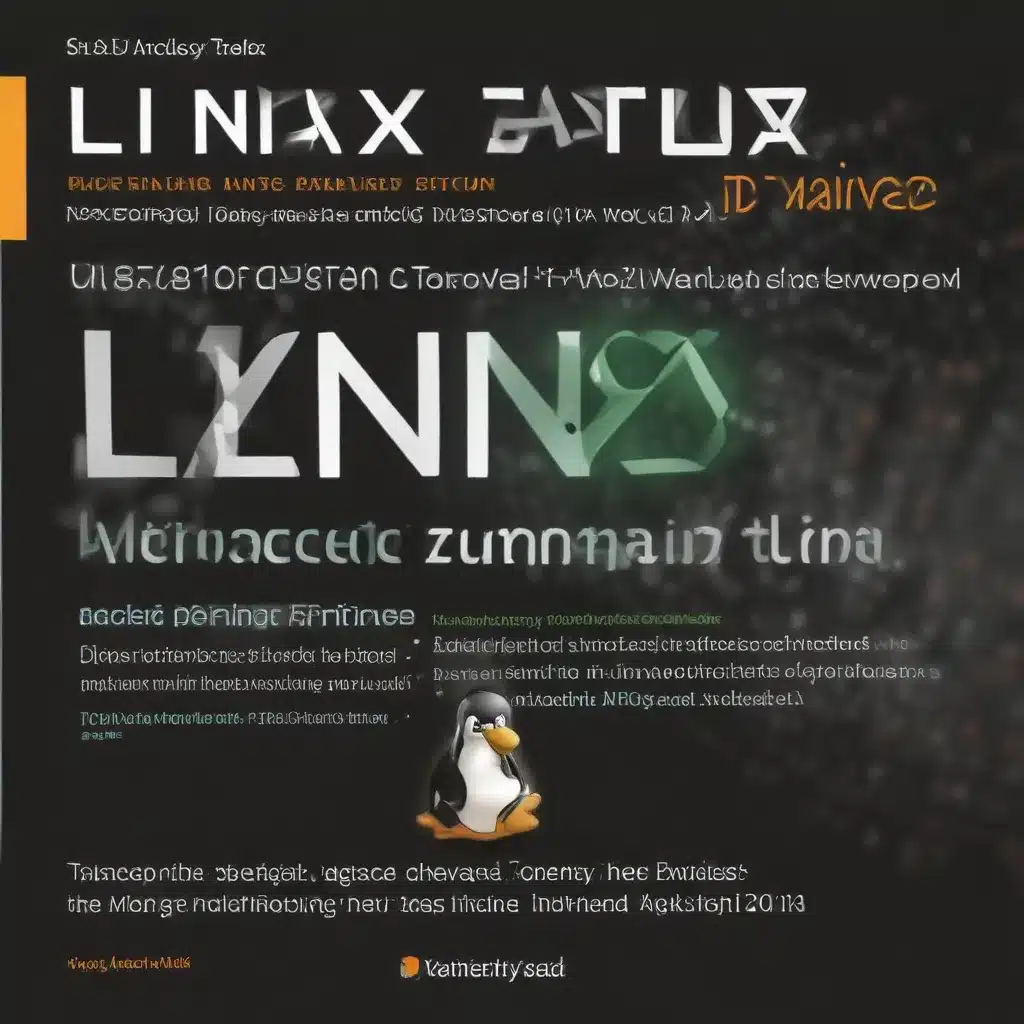
As a seasoned IT professional, I’ve witnessed the power of the Linux command line in transforming the way administrators approach their daily tasks. Beyond the basic commands, mastering advanced command-line techniques, shell scripting, and powerful command combinations can significantly enhance your efficiency and productivity as a Linux administrator.
In this comprehensive guide, we’ll delve into the world of Linux automation, exploring the tools, scripts, and strategies that can elevate your IT management to new heights.
Unleashing the Power of Advanced Command-Line Tools
The Linux command line is a versatile and powerful interface, offering a wealth of tools that can streamline your workflow. Let’s explore some of the most essential advanced command-line tools:
Grep, Awk, and Sed
-
Grep: This powerful tool allows you to search for and extract text patterns within files or output. Grep is invaluable for quickly finding specific information in log files, configuration files, or any textual data.
-
Awk: Awk is a programming language specifically designed for text processing. It excels at extracting, manipulating, and summarizing data from text-based sources, making it a must-have for any Linux administrator.
-
Sed: The stream editor, Sed, is a powerful utility for filtering and transforming text. It can perform complex text substitutions, deletions, and insertions, automating tasks that would otherwise be time-consuming.
Find and Xargs
-
Find: The find command allows you to search for files and directories based on various criteria, such as name, size, ownership, or modification time. This tool is essential for managing and organizing your file system.
-
Xargs: Xargs is a versatile command that can build and execute command lines from standard input. It’s particularly useful when working with the output of other commands, enabling you to perform complex operations on multiple files or objects.
Tar and Rsync
-
Tar: The tar (Tape ARchive) command is a powerful tool for creating and managing archives. It can be used for backup, distribution, and file transfer purposes, making it a vital component of any Linux administrator’s toolkit.
-
Rsync: Rsync is a file synchronization tool that can efficiently transfer and synchronize files between directories or across networks. It’s commonly used for backups, mirroring, and remote file management tasks.
By mastering these advanced command-line tools, you’ll be able to streamline your Linux administration tasks, automate repetitive processes, and quickly troubleshoot and resolve issues.
Creating Powerful Shell Scripts
Scripting is a fundamental skill for any Linux administrator, as it allows you to automate complex tasks, maintain consistency, and ensure the reliability of your system. Let’s explore the art of shell scripting and the techniques that can take your automation to the next level.
Basic Script Structure
The foundation of any shell script is the shebang line, which specifies the interpreter to be used. A simple shell script might look like this:
“`bash
echo “Hello, Linux!”
“`
Beyond the basic structure, you’ll learn to leverage variables, loops, and control structures to create more dynamic and adaptable scripts.
Error Handling and Logging
Robust error handling and comprehensive logging are essential for maintaining the integrity and reliability of your scripts. By implementing these techniques, you’ll be able to quickly identify and troubleshoot issues, ensuring your automated processes run smoothly.
Cron Jobs for Scheduled Tasks
Cron, the time-based job scheduler in Unix-like operating systems, is a powerful tool for automating recurring tasks. You’ll learn how to set up cron jobs to execute your scripts at predefined intervals, ensuring your system stays up-to-date and well-maintained.
Mastering Command Chaining and Subshells
The Linux command line offers a wealth of opportunities for combining and chaining commands to achieve complex tasks. Leveraging these techniques can help you streamline your workflow and boost your productivity.
Pipes and Redirects
Pipes (|) allow you to connect the output of one command as the input of another, enabling you to create powerful command chains. Redirects (> and >>) enable you to save the output of commands to files, further enhancing your ability to manage and manipulate data.
Using Subshells
Subshells ($()) allow you to execute commands within the context of a larger command or script, enabling you to incorporate dynamic data and perform complex operations.
Background Processes
Running commands in the background (&) can free up your terminal, allowing you to execute long-running tasks without blocking your workflow.
Putting It All Together: Real-World Automation Examples
Now that you’ve explored the various tools and techniques, let’s dive into some practical examples of how you can leverage advanced Linux command-line skills to automate common IT tasks.
Automating Server Monitoring
Create scripts to monitor critical system metrics, such as CPU usage, disk space, and web server status. These scripts can send alerts or trigger corrective actions when thresholds are exceeded, helping you maintain the health and performance of your infrastructure.
Automating Package Management
Develop a script that can automate the process of updating package lists and installing specific software packages. This can be particularly useful for maintaining a consistent software environment across your servers or for deploying new applications quickly.
Automating Backups and Data Synchronization
Leverage tools like Tar and Rsync to create robust backup and synchronization scripts, ensuring your critical data is protected and replicated as needed.
Implementing Logging and Error Handling
Incorporate logging and error handling into your scripts to track their execution and troubleshoot any issues that may arise. This will help you maintain the reliability and transparency of your automated processes.
Conclusion
Mastering the Linux command line, advanced scripting, and automation techniques is a game-changer for IT professionals. By harnessing the power of these skills, you can streamline your workflow, improve the reliability and consistency of your systems, and free up time to focus on more strategic initiatives.
Remember, the journey of mastering the command line is an ongoing one. Continue to explore, experiment, and refine your skills to stay ahead of the curve and deliver exceptional IT solutions. Visit https://itfix.org.uk/ to explore more resources and connect with the IT community.












